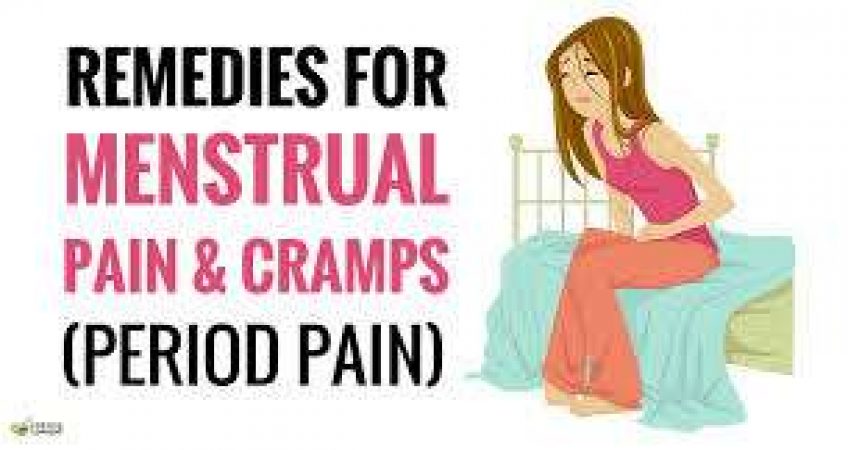Curbing The Menstrual Pain Menace: Diet Tips To Ease The Pain
#1: Reduce Omega-6 Fats in Your Diet, Increase Omega-3 Fats
Omega-6 fatty acids are considered essential fatty acids (EFAs), and a certain amount is necessary to maintain the proper functioning of the human body. However, excessive amounts of omega-6 can aggravate menstrual pain because these fats produce inflammatory substances such as inflammatory prostaglandins and leukotrienes. Prostaglandins (or their metabolites) are believed to temporarily disrupt blood supply to the uterus, thus depriving the uterus of oxygen resulting in pain and cramping. Many pain-killing medicines that are used to treat menstrual pain work on the principle of inhibiting the effects of prostaglandins.
The anti-inflammatory omega-3 fats in flaxseeds may help prevent menstrual cramps.
While omega-6 fatty acids may worsen pain during menses, omega-3 fatty acids, which have anti-inflammatory properties, may help reduce pain. Many experts believe that our ancestors consumed omega-3 and omega-6 fatty acids in roughly equal amounts. Today, most modern diets in Western countries contain too much of the potentially inflammatory omega-6 fatty acids and not enough anti-inflammatory omega-3 acids. Simply consuming less refined vegetable oils like corn oil and safflower oil that are high in omega-6 fatty acids and consuming more foods high in omega-3 fatty acids (e.g. chia seeds, flaxseeds, walnuts, soybeans, and cold water fish like salmon, cod, and halibut) can help with menstrual pain.
#2: Step Up Your Vitamin E Intake
A large body of scientific research suggests that vitamin E (tocopherol) is effective for treating primary dysmenorrhea. A substantial intake of vitamin E a few days prior to the onset of and during menstruation has been shown to significantly reduce menstrual pain as well as to limit the amount of blood lost during menstruation. The potential of vitamin E to alleviate menstrual problems is believed to result from its ability to inhibit prostaglandin synthesis. Seeds, nuts, and vegetable oils are among the best sources of vitamin E.Vitamin B6, abundant in bananas, can act as a natural pain killer.
#3: Add Foods Rich in Vitamin B6 to Your Diet
Vitamin B6 (pyridoxine) is a vital component of any diet aiming at reducing menstrual pain. This important vitamin plays a key role in the synthesis of the neurotransmitter dopamine, which is thought to promote physical and emotional well-being. Studies show that vitamin B6 can reduce pain; however, it does not appear to be capable of affecting the underlying cause. Good sources of vitamin B6 include bananas, lentils, chick peas, oatmeal, lean beef, wild salmon, and chicken breast.
#4: Consume Plenty of Foods Rich in Vitamin B3
One study found that vitamin B3 (niacin) was effective at reducing menstrual cramps in nearly 90% of symptomatic women. The women were given 200 mg of niacin daily throughout the menstrual cycle and 100 mg every two to three hours when experiencing cramps during menstruation. The exact mechanisms by which niacin alleviates menstrual pain have not been proven; however, there are several proposed theories. The most commonly accepted theory suggests that the beneficial effects of niacin result from the vitamin’s ability to lessen the spasm of the uterine arteries. Vitamin C and the bioflavonoid rutin have been shown to further boost the effectiveness of niacin in the treatment of dysmenorrhea.
#5: Ensure a Sufficient Intake of Calcium
Green leafy vegetables provide a good low-fat source of calcium.
Calcium has for long been known for its role in supporting strong bones, but few are aware that calcium can also help women who suffer from painful menstruation. A large body of anecdotal evidence, as well as an increasing number of scientific studies, suggest that an increased intake of calcium can alleviate menstrual cramps. However, the exact mechanisms by which calcium decreases cramps are not fully understood. It has been proposed that calcium’s beneficial effects on menstrual problems could be related to the role of this important mineral in maintaining normal muscle tone. Calcium-deficient muscles are more likely to be tense, which may trigger menstrual cramps. Skimmed milk and low-fat dairy provide a good source of calcium, without containing much saturated fats that are known to worsen pain during menses. If you are sensitive to dairy products, choose other sources of calcium such as green leafy vegetables.
#6: Add Zinc to Your Diet
Zinc supplementation a few days prior to the onset of menses has been shown to prevent premenstrual pain and bloating. These effects were achieved when zinc was administered to the test subjects in very high doses (30-mg doses, 1 to 3 times per day, 1 to 4 days prior to the onset of menses). These mega doses were far beyond the United States RDA for zinc, but the researchers who conducted the study believe that large doses of zinc for a few days a month are safe and unlikely to cause disturbances in copper metabolism (a copper deficiency is one of the first signs of an excessive zinc intake). Zinc, which requires vitamin B6 for proper absorption in the intestines, is found in a variety of foods, the richest dietary sources being oysters, red meat, and poultry.
#7: Consume Magnesium-Rich Foods
Evidence suggests magnesium deficiency may be a cause of menstrual pain in some women and that restoring magnesium levels to normal can progressively reduce the severity and duration of menstrual cramps. Magnesium supplementation has also been shown to relieve back pain associated with menstruation. Mild deficiencies of magnesium are common in many Western countries where consumption of processed foods is common, as processing significantly decrease the magnesium content of foods. Also intensive farming, practiced in many Western countries, depletes the soil of magnesium, thereby reducing the magnesium content of the plants growing in the soil.

